Creating a well-stocked pantry doesn’t have to drain your bank account. With thoughtful planning and strategic shopping, you can build a functional food reserve that supports your cooking needs while respecting your financial boundaries.
A properly stocked pantry serves as both a culinary foundation and a financial safety net, allowing you to prepare delicious meals even when money is tight or unexpected expenses arise. Let’s dive in to know how to Stock Your Pantry on a Budget.
In This Article
- 1 Why a Well-Stocked Pantry Matters
- 2 Start with a Strategic Plan
- 3 Know Your Eating Habits
- 4 Create Categories for Organization
- 5 Budget-Friendly Shopping Strategies
- 6 Master Store Sales Cycles
- 7 Explore Discount Stores and Bulk Options
- 8 Ditch Name Brands for Staples
- 9 Clearance Aisle Gold
- 10 Seasonal Strategies for Maximum Savings
- 11 February: National Canned Food Month
- 12 Post-Holiday Clearance
- 13 DIY Approaches to Pantry Building
- 14 Learn Basic Canning Skills
- 15 Batch Cooking and Freezing
- 16 Essential Budget Pantry Staples
- 17 Grains and Starches
- 18 Proteins
- 19 Cooking Basics
- 20 Seasonings and Flavor Enhancers
- 21 Organization Systems for Maximum Efficiency
- 22 Implement the FIFO System
- 23 Clear Containers with Labels
- 24 Create Zones Based on Use Frequency
- 25 Maintaining Your Budget Pantry
- 26 Regular Inventory Checks
- 27 Meal Planning from Your Pantry
- 28 FAQ: Budget Pantry Essentials
- 28.1 Q: How much should I budget monthly for building my pantry?
- 28.2 Q: What’s the minimum pantry space needed to make this worthwhile?
- 28.3 Q: How do I know if something is actually a good deal?
- 28.4 Q: What’s the best way to store bulk dry goods long-term?
- 28.5 Q: How can I prevent pest problems in my pantry?
- 28.6 Q: What pantry items give the most value for the money?
- 28.7 Q: How do I rotate my pantry stock effectively?
- 28.8 Q: What’s one pantry staple that’s worth splurging on?
- 29 Conclusion
Why a Well-Stocked Pantry Matters
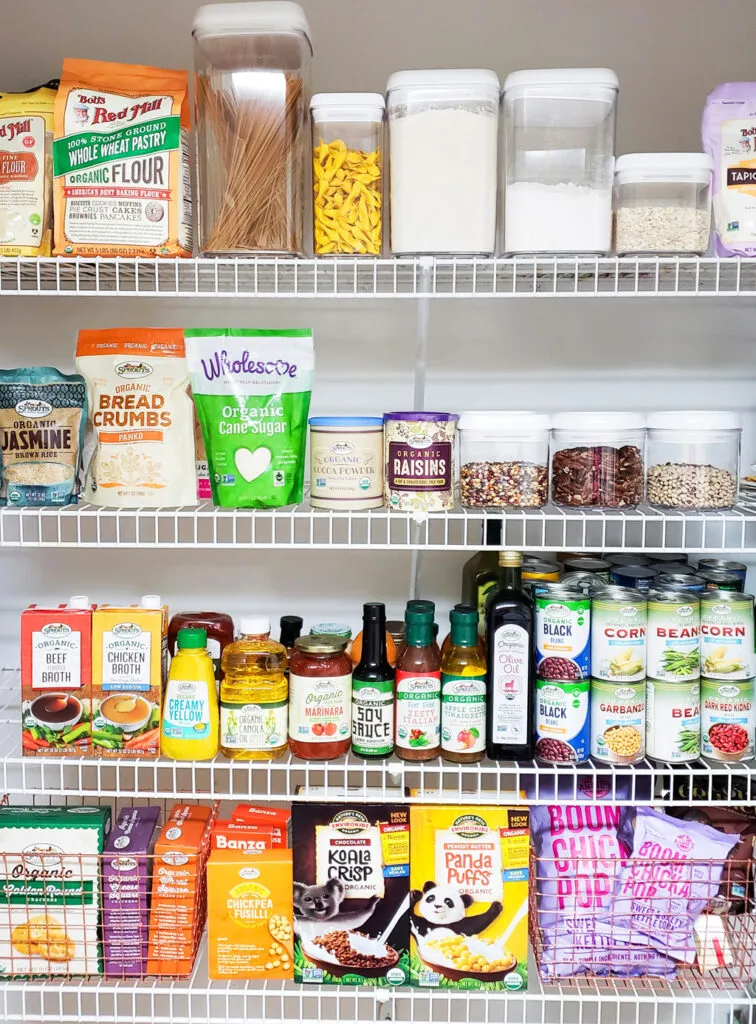
A thoughtfully stocked pantry does more than just fill cabinet space—it transforms your cooking experience and budget management. When essential ingredients are always at your fingertips, you’re less likely to order takeout or make unnecessary grocery runs, both of which can quickly deplete your food budget.
Having pantry staples on hand means:
- You can prepare meals without constant shopping trips
- You’re prepared for unexpected financial challenges
- You can take advantage of sales without panic buying
- You have the foundation for countless recipes ready to go
Pro Tip: Create a dedicated “pantry fund” in your monthly budget. Even setting aside just $20-25 per month specifically for stocking pantry staples can build an impressive collection over time.
Start with a Strategic Plan
Before filling your cart with random items on sale, develop a thoughtful approach to building your pantry reserves.
Know Your Eating Habits
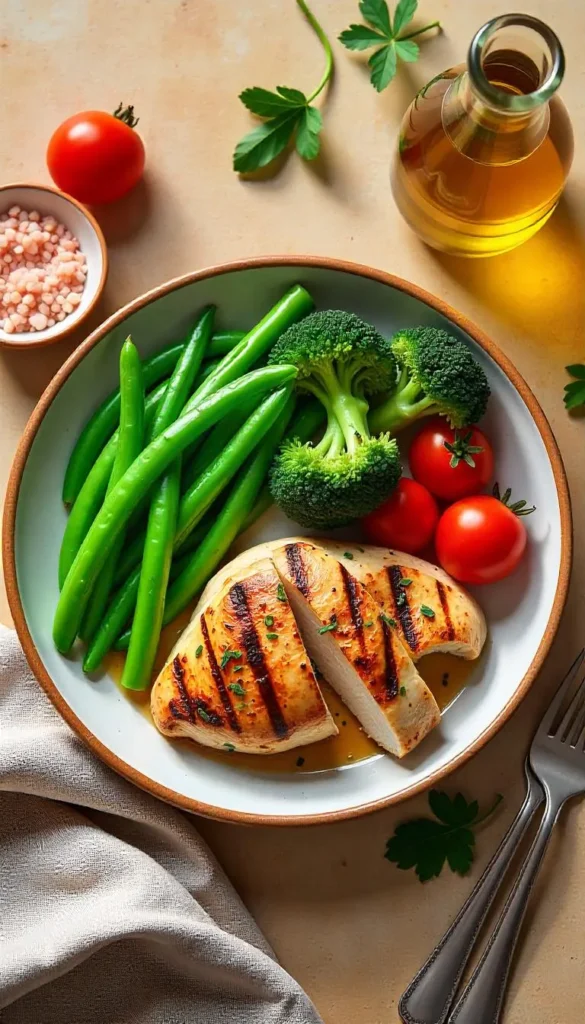
The most important rule when stocking a budget pantry: only buy what you’ll actually eat. Those twenty cans of garbanzo beans aren’t a bargain if your family refuses to touch them.
“If you won’t eat it, don’t buy it—no matter how good the deal,” should be your mantra. Take inventory of your family’s favorite meals and the ingredients they contain. These should form the foundation of your pantry stockpile.
Create Categories for Organization
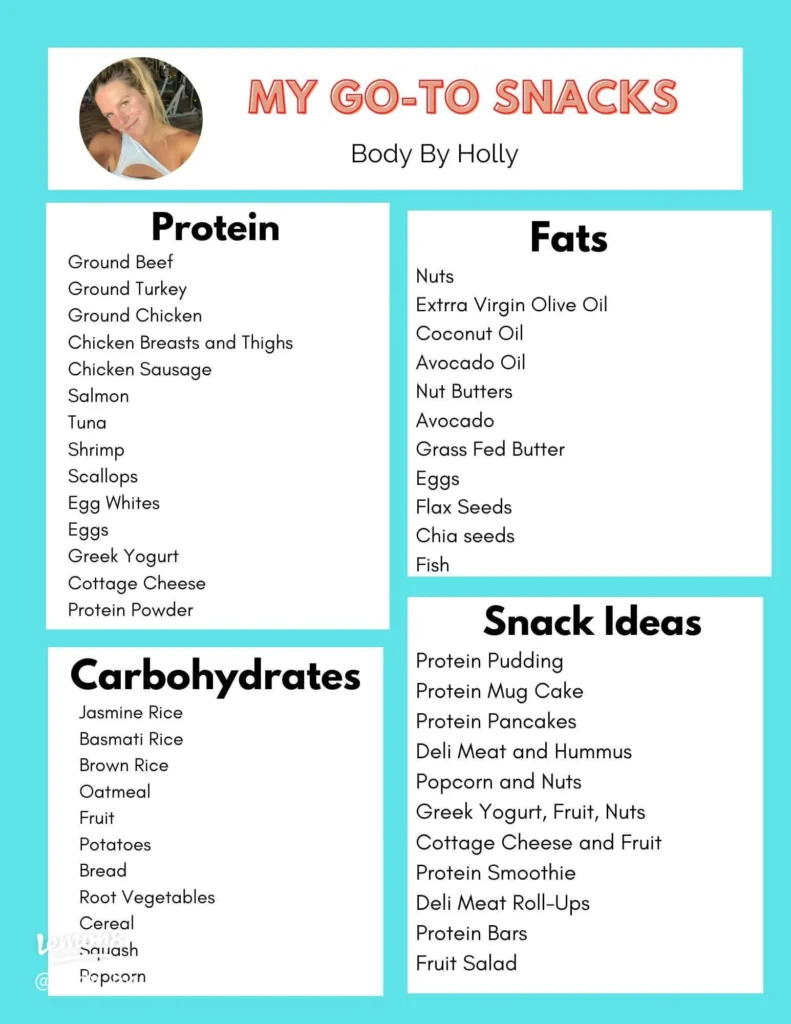
Organize your pantry planning into these essential categories:
- Grains and Starches: Rice, pasta, quinoa, barley, oats
- Proteins: Beans, lentils, canned tuna/salmon, nut butters
- Cooking Basics: Oils, vinegars, broths, canned tomatoes
- Baking Essentials: Flour, sugar, baking powder/soda
- Seasonings: Salt, pepper, dried herbs, spices
- Quick Meals: Pasta sauce, salsa, coconut milk
- Snacks: Popcorn kernels, dried fruits, nuts
Pro Tip: Create a digital or printed inventory sheet with these categories. Note current quantities and highlight when items fall below your desired stock level. This prevents overbuying and helps identify true needs.
Budget-Friendly Shopping Strategies

With your plan in place, implement these money-saving tactics to build your pantry without breaking the bank.
Master Store Sales Cycles
Most grocery stores operate on predictable sales cycles of 6-8 weeks for pantry staples. By tracking these patterns, you can time your purchases to coincide with the lowest prices.
Check Next: 7 Minimal Farmhouse Pantry Storage Organisation Ideas for Small Kitchen
“The trick is to purchase those items at the rock bottom price, and if you can add a coupon to it, even better!” This approach can save significant money over time.
How to Track Sales Cycles:
- Save weekly store flyers for 2 months
- Note when pantry staples hit their lowest prices
- Create a price book recording the lowest prices you find
- Stock up only when items reach their cycle low point
Pro Tip: Create a simple spreadsheet tracking your most-used items, their regular price, and the lowest sale price you’ve seen. This makes it instantly clear when you’re seeing a truly good deal.
Explore Discount Stores and Bulk Options

Stores like Aldi, discount grocers, and even dollar stores often offer pantry staples at significantly lower prices. For items with long shelf lives that you use regularly, buying in bulk can dramatically reduce the per-unit cost.
Ditch Name Brands for Staples
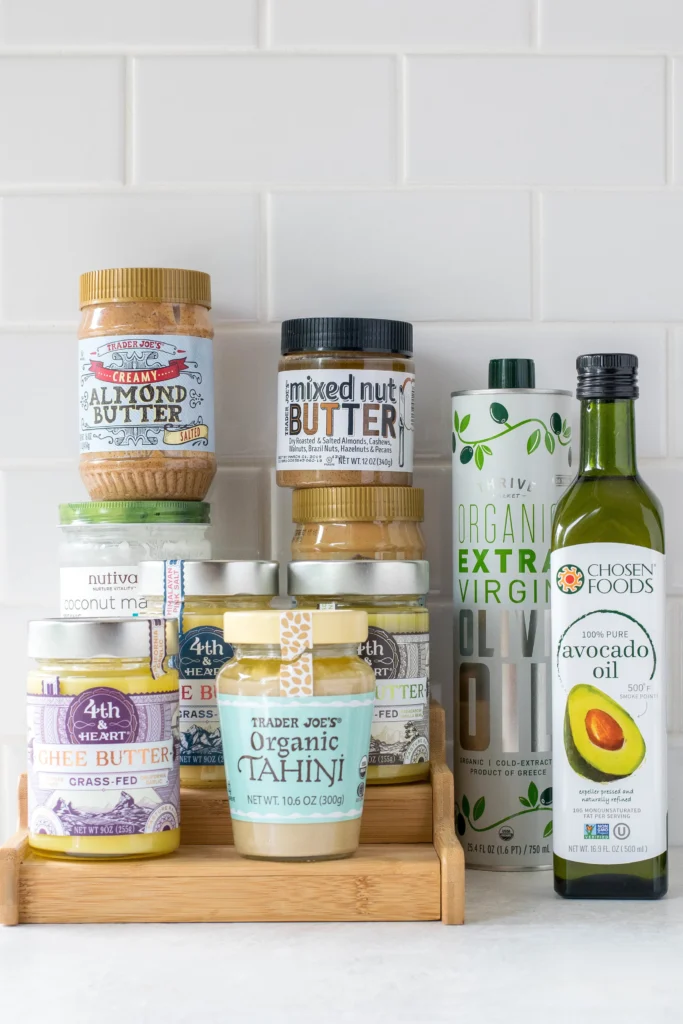
For many pantry basics, the store brand version is virtually identical to the name brand but costs significantly less. Items like rice, flour, sugar, and canned vegetables typically show little quality difference between brands.
Pro Tip: Do a blind taste test with your family comparing name brand and store brand versions of your staples. You’ll likely find many instances where the cheaper option is indistinguishable or even preferred!
Clearance Aisle Gold
The clearance section of your grocery store can be a treasure trove for pantry building. Items are often marked down because of packaging changes or approaching (but still distant) best-by dates.
For shelf-stable items like dried beans, rice, and many canned goods, the “best by” date has a significant buffer built in. Many dry goods remain perfectly safe and nutritious for years beyond this date when stored properly.
Seasonal Strategies for Maximum Savings
Certain times of year offer special opportunities for pantry stocking.
February: National Canned Food Month
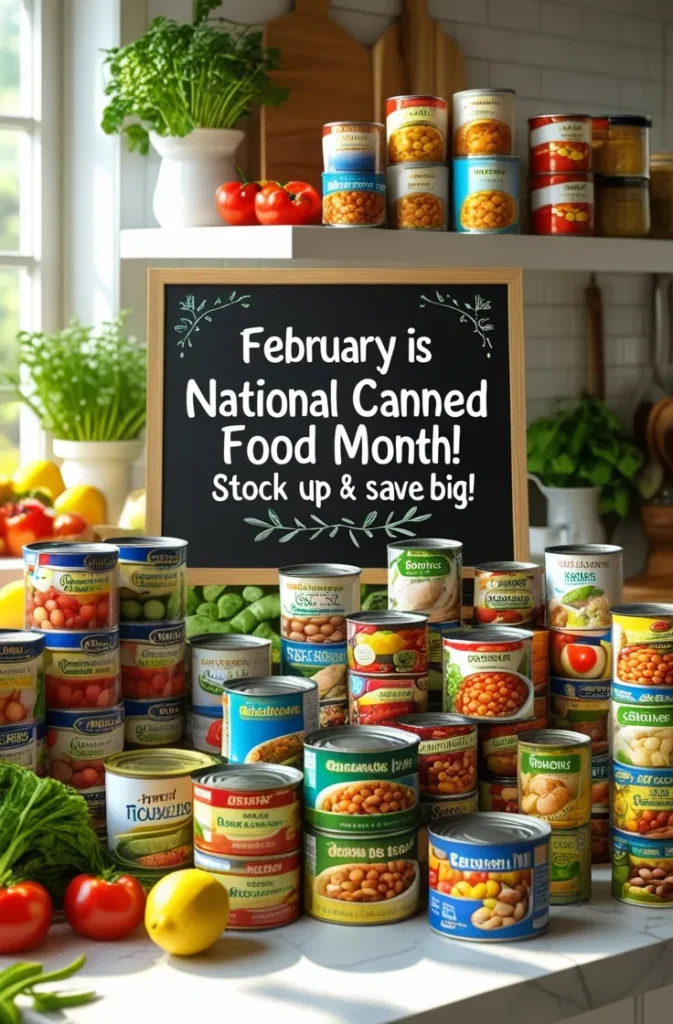
February typically features exceptional sales on canned goods. Stock up on:
- Canned vegetables and fruits
- Canned proteins (tuna, chicken, beans)
- Canned soups and broths
- Tomato products
Pro Tip: Combine manufacturer coupons with store sales during February for the absolute lowest prices on canned goods all year.
Post-Holiday Clearance

After major holidays, seasonal baking items and certain pantry goods are often deeply discounted. Look for:
- Baking supplies after Christmas and Thanksgiving
- Condiments and grilling items after summer holidays
- Specialty ethnic ingredients after cultural celebrations
DIY Approaches to Pantry Building
Take your budget pantry to the next level with these do-it-yourself approaches.
Learn Basic Canning Skills
Home canning allows you to preserve seasonal produce at its peak flavor and lowest price. While there is an initial investment in equipment, the long-term savings can be substantial, especially if you grow your own produce or purchase in bulk during harvest season.
Recommended Products:
- Pressure Canner for Beginners – Essential for safely canning low-acid foods.
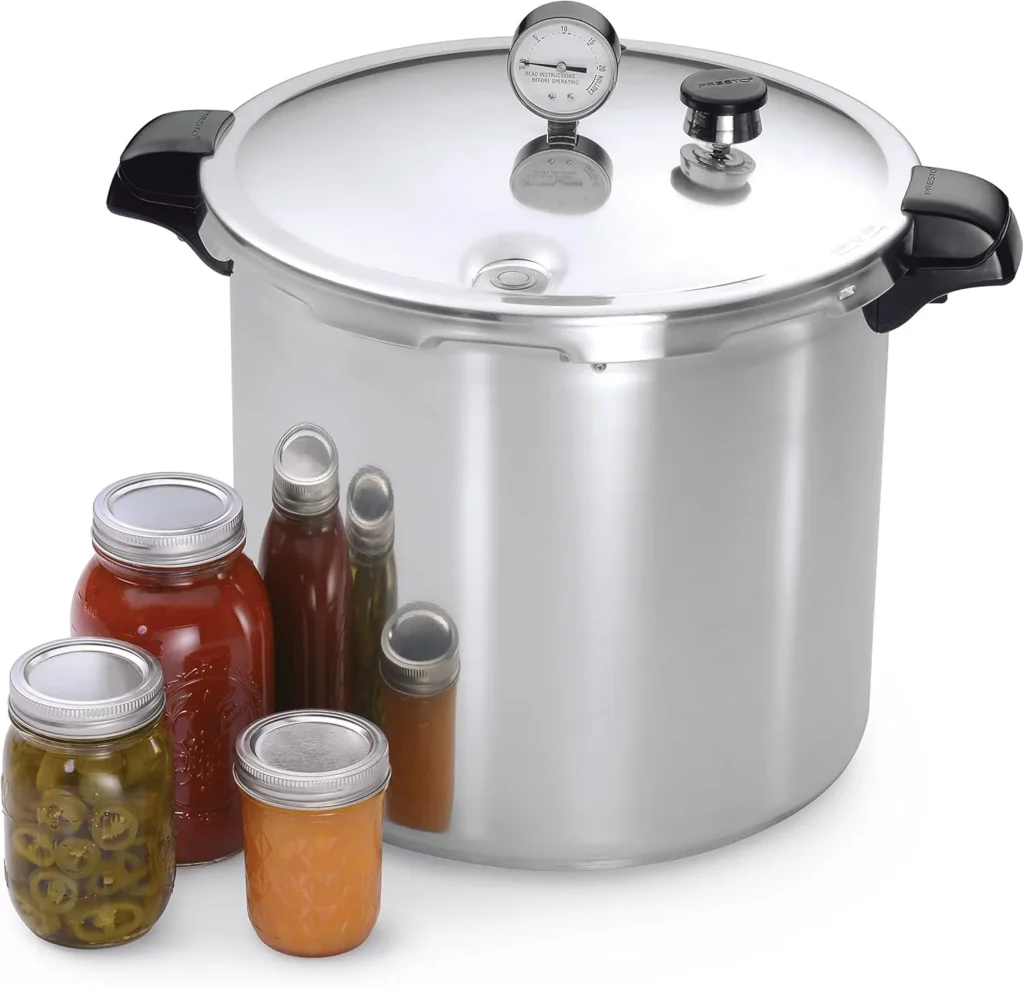
Pro Tip: Start with high-acid foods like tomatoes or pickles, which can be safely processed in a water bath canner rather than requiring a pressure canner.
Batch Cooking and Freezing
Prepare large batches of pantry-based meals and freeze portions for later use. This maximizes the value of your pantry staples and creates your own “convenience foods” at a fraction of the cost.
Great freezer-friendly options include:
- Bean and vegetable soups
- Pasta sauces
- Cooked rice and grains
- Bread and baked goods
Essential Budget Pantry Staples

These versatile, affordable items form the backbone of a budget-friendly pantry.
Grains and Starches
- Rice: Brown, white, and specialty varieties like jasmine or basmati
- Pasta: Regular, whole wheat, and legume-based options
- Oats: For breakfast, baking, and homemade granola
- Barley: Hearty addition to soups and stews
- Cornmeal: For cornbread, polenta, and coating
Recommended Product:
- Airtight Cereal Storage Containers – Perfect for keeping grains fresh longer
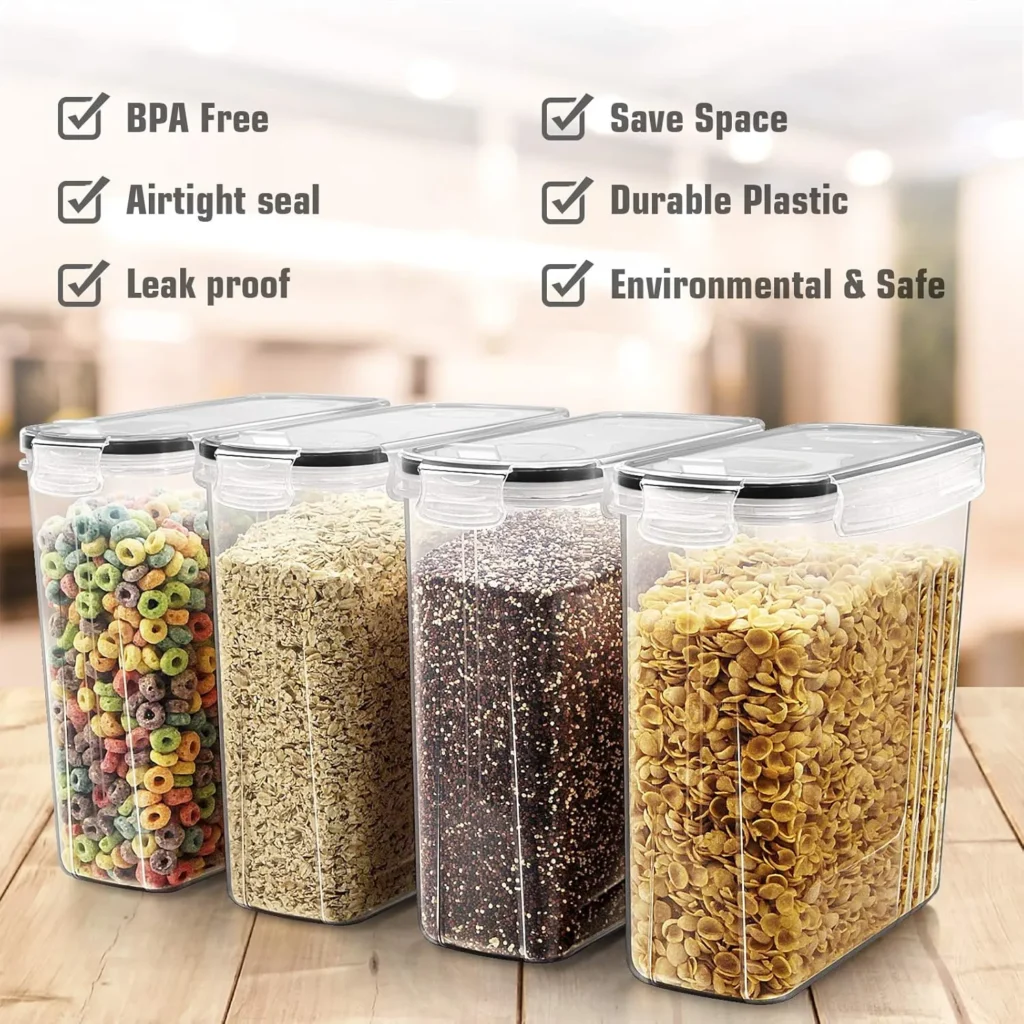
Proteins
- Dried beans: Black, pinto, chickpeas, lentils
- Canned beans: For quick meal preparation
- Canned tuna and salmon: Shelf-stable protein sources
- Nut butters: Peanut, almond, sunflower
Pro Tip: Buy dried beans in bulk and cook large batches to freeze in meal-sized portions. This combines the economy of dried beans with the convenience of canned.
Cooking Basics
- Oils: Olive, avocado, coconut
- Vinegars: Apple cider, balsamic, rice
- Canned tomatoes: Diced, crushed, paste
- Broths: Vegetable, chicken, beef (or bouillon cubes)
Recommended Product:
- Oil Dispenser Set – Reduces waste and extends shelf life of cooking oils

Seasonings and Flavor Enhancers
- Salt and pepper
- Dried herbs: Basil, oregano, thyme, rosemary
- Spices: Cumin, paprika, chili powder, cinnamon
- Garlic powder and onion powder
- Nutritional yeast: Adds savory flavor and nutrients
Pro Tip: Build your spice collection gradually by purchasing one new spice each month. Focus first on versatile options that work in multiple cuisines.
Organization Systems for Maximum Efficiency
A well-organized pantry prevents waste and makes cooking more efficient.
Implement the FIFO System
First In, First Out (FIFO) ensures you use older items before newer ones, reducing food waste. When restocking:
- Remove similar items already on the shelf
- Place new items at the back
- Return older items to the front
Recommended Products:
- Rotating Can Organizer – Automatically implements FIFO for canned goods
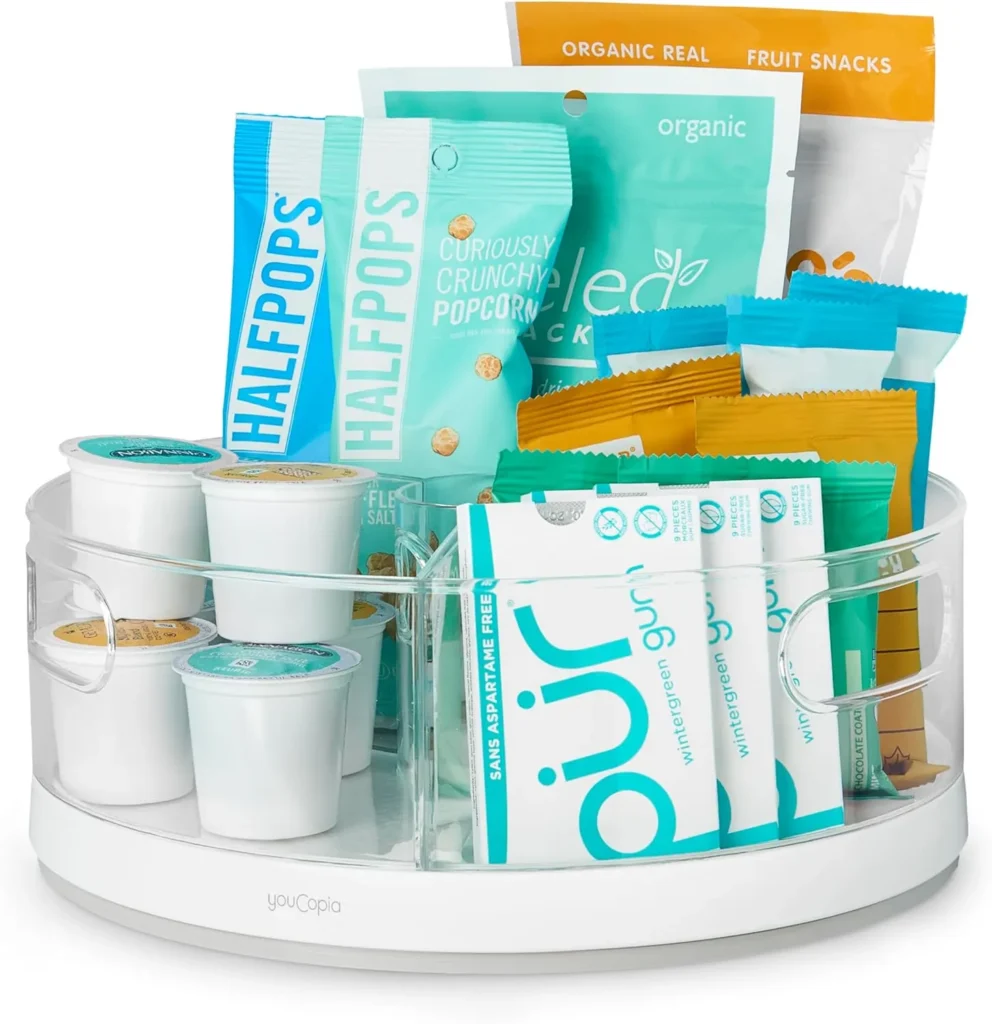
Clear Containers with Labels
Transfer dry goods to clear containers to:
- See inventory levels at a glance
- Protect from pests
- Extend shelf life
- Create uniform, stackable storage
Recommended Products:
- Glass Storage Jars Set – Airtight storage with bamboo lids
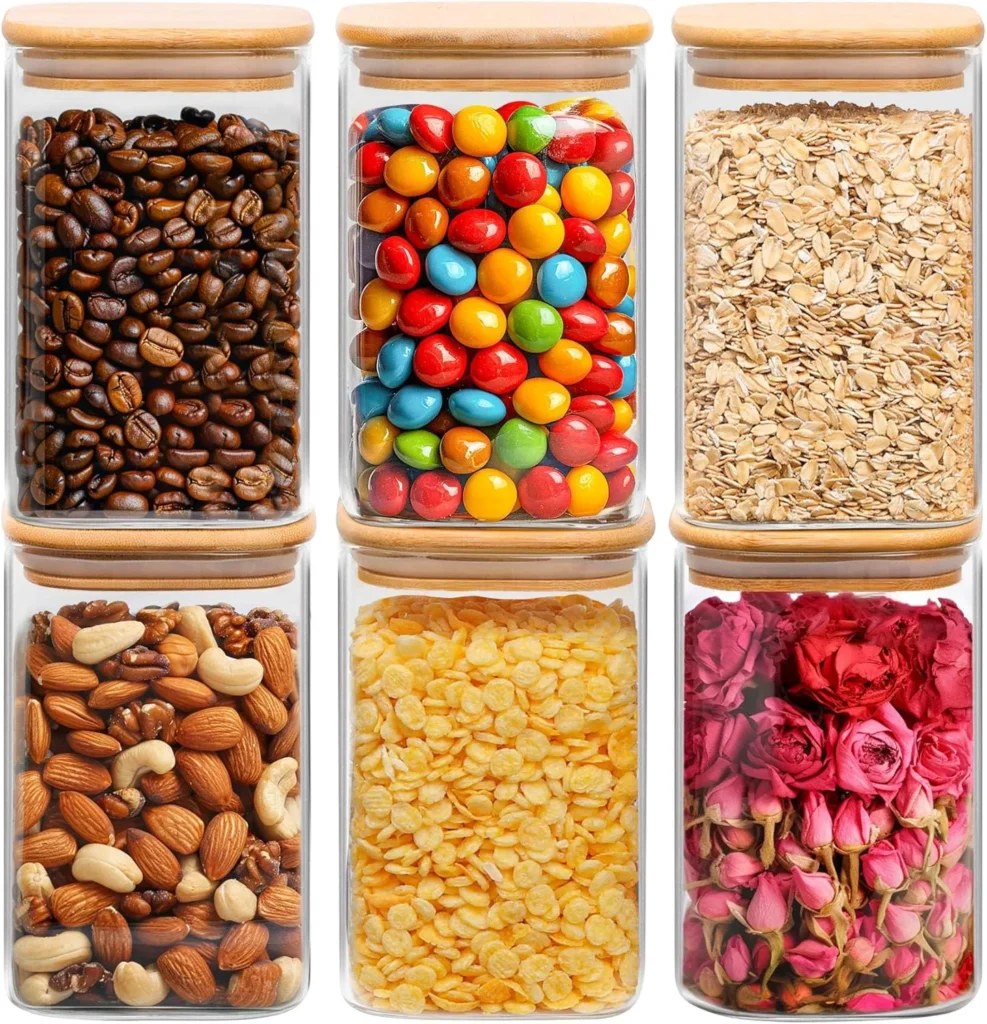
Create Zones Based on Use Frequency
Organize your pantry into zones based on how often items are used:
- Everyday Zone: Eye-level, easily accessible
- Weekly Zone: Still accessible but not prime real estate
- Long-Term Storage: Higher shelves or back of pantry
- Specialty Items: Less accessible areas
Pro Tip: Create a “meal starter” zone with grouped ingredients for your family’s favorite meals. For example, keep pasta, jarred sauce, and Italian seasonings together for quick spaghetti dinners.
Maintaining Your Budget Pantry
Building a pantry is just the beginning—maintaining it is an ongoing process.
Regular Inventory Checks
Schedule monthly pantry reviews to:
- Check for expired items
- Identify low stock needing replenishment
- Reorganize as needed
- Plan meals around what you have
Recommended Product:
- Magnetic Dry Erase Board – Perfect for tracking inventory and creating shopping lists

Meal Planning from Your Pantry
Start meal planning by shopping your pantry first:
- Identify items needing to be used soon
- Build meals around these ingredients
- Supplement with fresh items as needed
- Add only true needs to your shopping list
Pro Tip: Challenge yourself to a “pantry week” once a month where you prepare meals using only what you already have on hand. This prevents stockpiling and forces creative use of existing ingredients.
FAQ: Budget Pantry Essentials
Q: How much should I budget monthly for building my pantry?
A: Start with 15-20% of your regular grocery budget dedicated to pantry building. For a $400 monthly grocery budget, allocate $60-80 for pantry stocking.
Q: What’s the minimum pantry space needed to make this worthwhile?
A: Even a single cabinet can house essential pantry staples. Focus on versatile items that serve multiple purposes if space is limited.
Q: How do I know if something is actually a good deal?
A: Track the price per unit (ounce, pound, etc.) rather than package price. Compare this to your price book to determine if it’s truly a bargain.
Q: What’s the best way to store bulk dry goods long-term?
A: For maximum shelf life, store in airtight containers in a cool, dark place. Add oxygen absorbers for items stored longer than 6 months.
Q: How can I prevent pest problems in my pantry?
A: Transfer all dry goods to sealed containers immediately, clean shelves regularly, and consider adding bay leaves or food-safe diatomaceous earth as natural deterrents.
Q: What pantry items give the most value for the money?
A: Dried beans, rice, pasta, oats, and flour offer the most meals per dollar spent. Spices, while initially more expensive, provide flavor to countless dishes over time.
Q: How do I rotate my pantry stock effectively?
A: Use the FIFO (First In, First Out) method by placing newer items behind older ones, and maintain an inventory list with purchase dates.
Q: What’s one pantry staple that’s worth splurging on?
A: Quality olive oil. It’s used in countless recipes and the flavor difference is noticeable, making it worth the investment.
Conclusion
Building a well-stocked pantry on a budget is a journey, not a destination. Start small, be consistent, and before you know it, you’ll have created a valuable resource that saves money, time, and stress in your daily life.
Featured image source

